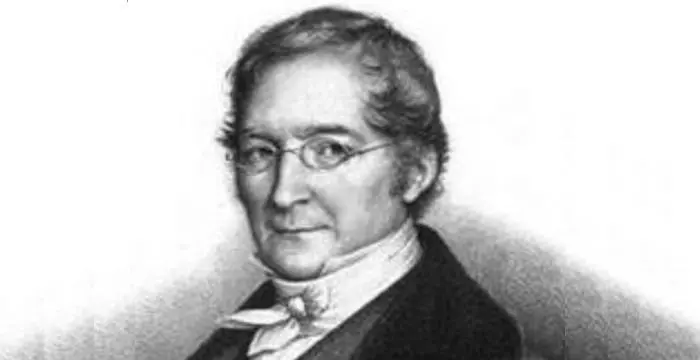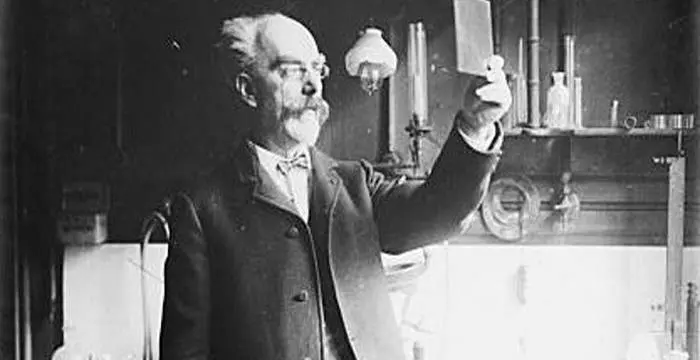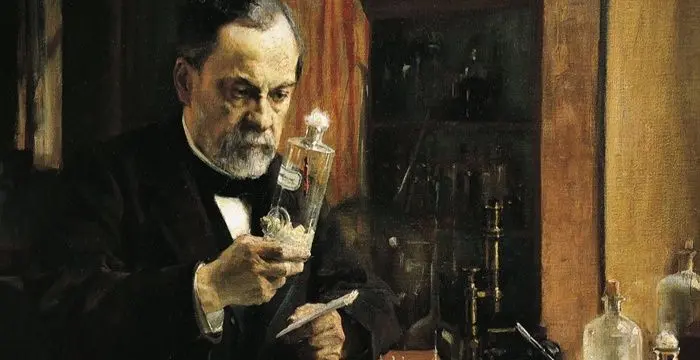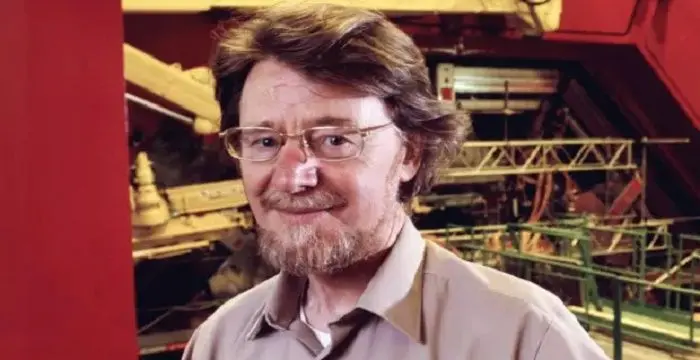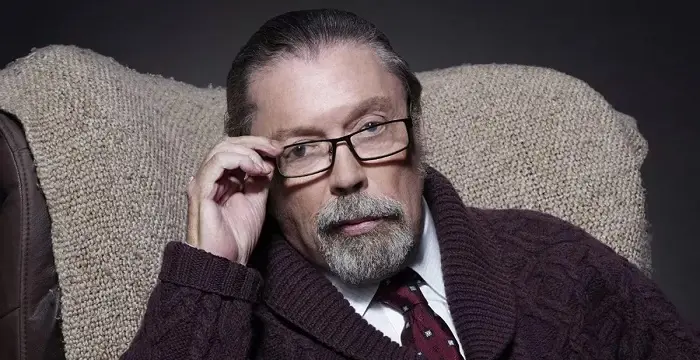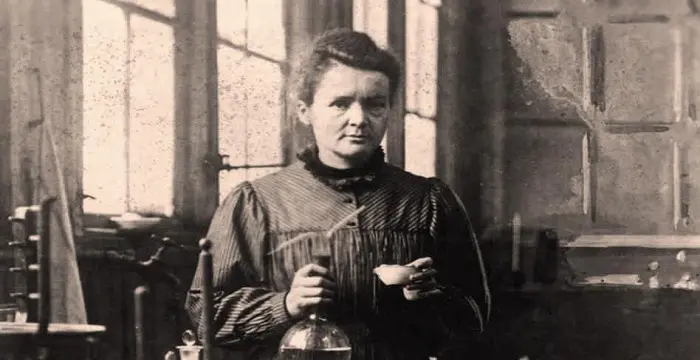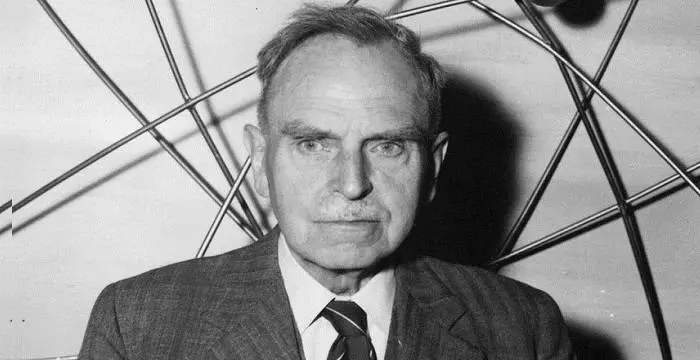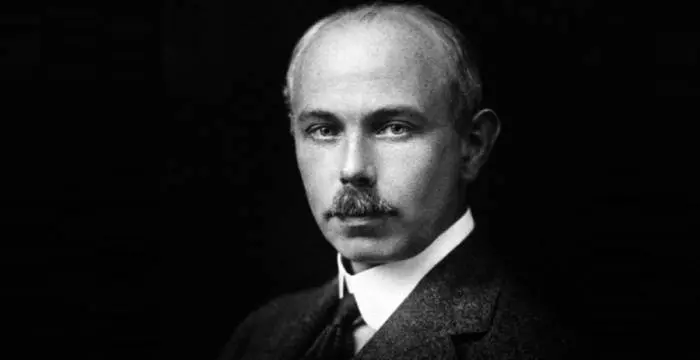
Francis William Aston - Chemists, Career and Childhood
Francis William Aston's Personal Details
Francis William Aston was a British scientist who won the 1922 Nobel Prize in Chemistry
| Information | Detail |
|---|---|
| Birthday | September 1, 1877 |
| Died on | November 20, 1945 |
| Nationality | British |
| Famous | Trinity College, Cambridge, University Of Birmingham, Inventors & Discoverers, Physicists, Chemists, Chemists, Physicists |
| Known as | Francis W. Aston |
| Universities |
|
| Notable Alumnis |
|
| Discoveries / Inventions |
|
| Birth Place | Harborne, Birmingham |
| Gender | Male |
| Sun Sign | Virgo |
| Born in | Harborne, Birmingham |
| Famous as | Chemist & Physicist |
| Died at Age | 68 |
// Famous Physicists
Walter Kohn
Nobel Laureate Walter Kohn was an Austrian-born American theoretical chemist and physicist. Check out this biography to know about his childhood, life, achievements, works & timeline.
Amedeo Avogadro
Amedeo Avogadro was an Italian scientist who formulated what is now known as Avogadro's law. This biography of Amedeo Avogadro provides detailed information about his childhood, life, achievements, works & timeline.
Gabriel Lippmann
Gabriel Lippmann was a French physicist and inventor. He was awarded the Nobel Prize in Physics in 1908. This biography of Lippmann provides detailed information about his childhood, life, research, achievements and timeline.
Francis William Aston's photo
Who is Francis William Aston?
Francis William Aston was a British scientist born in the last quarter of the nineteenth century. He won the 1922 Nobel Prize in Chemistry. Though he was initially trained as a chemisthe later became interested in physics and began his career as an associate of well-known physicist John Henry Poynting at the University of Birmingham. Later he shifted to Cavendish Laboratory at Cambridge to work with J. J. Thompson. While working with neon gas at Cavendish Laboratory he had inkling that the gas might contain two isotopes. However, before he could further explore it World War I broke out and he was assigned to the war duty at Royal Aircraft Establishment at Farnborough. He resumed his research after the war. He first developed a positive-ray apparatus called ‘mass spectrograph’ and with that he first identified two distinct isotopes of neon. Subsequently he began experimenting with other gases and identified 212 naturally occurring isotopes! Besides science, he was equally good in tennis and golf. Most of all he liked travelling and could play a number of musical instruments. Indeed, he was man of diverse talent.
// Famous Chemists
Walter Kohn
Nobel Laureate Walter Kohn was an Austrian-born American theoretical chemist and physicist. Check out this biography to know about his childhood, life, achievements, works & timeline.
Amedeo Avogadro
Amedeo Avogadro was an Italian scientist who formulated what is now known as Avogadro's law. This biography of Amedeo Avogadro provides detailed information about his childhood, life, achievements, works & timeline.
Louis Pasteur
Louis Pasteur was a French chemist and microbiologist who developed the first vaccines for rabies and anthrax. This biography of Louis Pasteur provides detailed information about his childhood, life, achievements, works & timeline.
Childhood & Early Life
Francis William Aston was born on 1 September 1877 in Harborne, Birmingham, United Kingdom. His father, William Aston, owned a small farm, which dealt in metal objects. His mother’s name was Fanny Charlotte Hollis. He was third of his parent’s seven children.
Francis started his education at Harborne Vicarage School. Later he was enrolled at Malvern College, a boarding school in Worcestershire and studied there for two years. It was at the Malvern College that he started developing interest in science and demonstrated special aptitude in physics, chemistry and mathematics.
In 1893, he entered Mason College in Birmingham.Here he studied physics under John Henry Poynting and chemistry under Percy F. Frankland and William A. Tilden. He graduated from there in 1896.
Aston next opened a private laboratory at his father’s house and started working on organic chemistry. Two years later, in 1998, he won Forster Scholarship and started working on optical properties of tartaric acid derivatives under Frankland. The paper on this work was published three years later in 1901.
Meanwhile in 1900, because of financial reasons, Aston left academics to start working as a fermentation chemist at W. Butler & Company Brewery in Wolverhampton. However, with the discovery of X-ray he began to develop interest in physics.
Career
Aston now started designing a new type of pump for evacuating vessels and developed interest in its gas discharge. In 1903, he won another scholarship and returned to Mason College, which had been incorporated into the University of Birmingham. He now began to work as an associate of Poynting
Here Aston passed electric current through a gas filled tube and began to investigate the properties of Crookes Dark Space, which refers to the dark space found between the cathode glow and the negative glow in a vacuum tube.
Very soon he discovered a new phenomenon, later known as ‘Aston’s Dark Space’. It refers to a dark space between the cathode surface and the cathode glow. He found that because of inadequate velocity the emitted electrons cannot ionize the gas in this area and hence the dark spot.
His father died in 1908 leaving him a large inheritance. He now took a trip round the world and returned to the University of Birmingham to accept a post of lecturer in the beginning of 1909.
Towards the end of 1909, Aston received an invitation from J. J. Thompson, who had by now been credited with discovery of electrons, to work as his assistant at the Cavendish Laboratory at Cambridge. As the post would enable him to devote more time to research he gladly accepted it.
He now began to work on positive rays produced at low pressure in electric discharge tubes. Thompson had by then developed a method of measuring atomic weights. It involved production of curves on a photographic plate with the help of electro-magnetic fields.
While experimenting with neon gas Aston found two separate curves, which meant that two identical atoms possessing different masses exist in the gas. However, he was not sure that he had found two different isotopes. For the time being, he thought he had found a separate element and named it ‘meta-neon’.
Before he could advance any further, the World War I broke out and Aston was employed at Royal Aircraft Establishment at Farnborough. He spent the war years working on the effect of atmosphere on the synthetic coatings of the airplanes.
In 1919, Aston returned to Cavendish Laboratory. He constructed a positive-ray apparatus, which he called ‘mass spectrograph’. He now used it to identify two distinct isotopes in neon. It brought him great recognition. Continuing in that direction he later identified isotopes of other stable elements like hydrogen and chlorine.
Later, he used such data to formulate his ‘Whole Number Rule’ He declared that, “the mass of the oxygen isotope being defined, all the other isotopes have masses that are very nearly whole numbers”. The rule was later used in the development of atomic energy.
He continued working on different aspects of chemistry and lived at Trinity College until his death. In 1936, he hypothesized about the subatomic energy and its use. He never took up teaching assignment because he wanted to devote all his time to research.
Major Works
Construction of the original mass spectrograph was his first major work. The apparatus used electrostatic and magnetic fields to produce opposite deflections in the same plane. By focusing beams through minute slits a series of lines could be obtained. Each of these lines corresponded to a definite particle mass.
He used the mass spectrograph, which he kept on improving, to examine fifty different types of elements and finally discovered 212 naturally occurring isotopes out of 287 that have so far been identified. This is perhaps his most important work.
Apart from numerous papers he penned down two books as well. His first book ‘Isotopes’ (1922) was later reprinted as 'Mass Spectra and Isotopes' (1941). ‘Structural Units of the Material Universe’ published in 1923 is another of his important work.
Awards & Achievements
In 1922, Francis William Aston was awarded the Nobel Prize in Chemistry "for his discovery of isotopes, in a large number of non-radioactive elements, and for his enunciation of the whole-number rule".
In 1922, Aston received Hughes Medal from the Royal Society of London "for his discovery of isotopes of a large number of the elements by the method of positive rays".
In 1938, he received the Royal Medal from the same organization "for his discovery of the isotopes of non-radioactive elements."
He also received the Mackenzie Davidson Medal of the Röntgen Society in 1920, the John Scott and the Paterno Medals in 1923 and Duddell Medal of the Physical Society in 1944.
Aston was elected a fellow of Trinity College in 1920. The next year, he was made a Fellow of the Royal Society. In 1921, he was elected to the International Committee on Atomic Weights. In addition, he was an honorary member of the Russian Academy of Sciences.
Personal Life & Legacy
Francis William Aston was a lifelong bachelor and led a socially active life. He was a keen golfer and along with Ernest Rutherford, Ralph Fowler and G.I. Taylor made a famous foursome. Swimming and tennis were also his favorite past time and he won many prizes in tennis tournaments.
In addition, he enjoyed different types of adventure sports like skiing, skating, rock climbing and surf riding. However, he stopped taking part in skiing in 193, after he grew a heart condition.
He loved travelling and would often go out on cycling tour. In addition to this, he loved music and could play piano, cello and violin.
Aston died on 20 November, 1945 at Cambridge, where he lived for last twenty-five years of his life. He was then sixty-eight years old.
Trivia
A lunar impact crater with a diameter of 43 km has been named Aston after him. It is located along the northwest limb of the Moon at the coordinate of 35.1° N 87.8° W.
British Mass Spectrometry Society has established the ‘Aston Award’ in his honor. The medal is awarded to anybody, who has worked in the United Kingdom and has made outstanding contribution in fields related directly to mass spectrometry.
Aston was a keen traveler and he would often combine it with his scientific work. He would often travel to different parts of the world to study solar eclipse. Once he cycled two hundred miles in a single day. He learned surf riding while holidaying in Honolulu.
// Famous University Of Birmingham
Susanne Klatten
Susanne Klatten is a businesswoman who is the richest woman in Germany. Check out this biography to know about her birthday, childhood, family life, achievements and fun facts about her.
John Stewart Bell
John Stewart Bell FRS was a famous Physicist of Irish descent. He is famous for developing the ‘Bell’s Theorem’ and also for his work in quantum physics. Know more about his profile, childhood, life and timeline in this biography.
Tim Curry
Tim Curry is an actor and musician whose works have covered various media like theatre, television and films. This biography provides detailed information about his childhood, life, achievements, works & timeline.
Francis William Aston's awards
| Year | Name | Award |
|---|---|---|
Other | ||
| 0 | Nobel Prize for Chemistry (1922) | |
| 0 | Hughes Medal (1922) | |
| 0 | Royal Medal (1938) | |
| 0 | Duddell Medal and Prize (1944) | |
Francis William Aston biography timelines
- // 1st Sep 1877Francis William Aston was born on 1 September 1877 in Harborne, Birmingham, United Kingdom. His father, William Aston, owned a small farm, which dealt in metal objects. His mother’s name was Fanny Charlotte Hollis. He was third of his parent’s seven children.
- // 1893 To 1896In 1893, he entered Mason College in Birmingham.Here he studied physics under John Henry Poynting and chemistry under Percy F. Frankland and William A. Tilden. He graduated from there in 1896.
- // 1900Meanwhile in 1900, because of financial reasons, Aston left academics to start working as a fermentation chemist at W. Butler & Company Brewery in Wolverhampton. However, with the discovery of X-ray he began to develop interest in physics.
- // 1901 To 1998Aston next opened a private laboratory at his father’s house and started working on organic chemistry. Two years later, in 1998, he won Forster Scholarship and started working on optical properties of tartaric acid derivatives under Frankland. The paper on this work was published three years later in 1901.
- // 1903Aston now started designing a new type of pump for evacuating vessels and developed interest in its gas discharge. In 1903, he won another scholarship and returned to Mason College, which had been incorporated into the University of Birmingham. He now began to work as an associate of Poynting
- // 1908 To 1909His father died in 1908 leaving him a large inheritance. He now took a trip round the world and returned to the University of Birmingham to accept a post of lecturer in the beginning of 1909.
- // 1909Towards the end of 1909, Aston received an invitation from J. J. Thompson, who had by now been credited with discovery of electrons, to work as his assistant at the Cavendish Laboratory at Cambridge. As the post would enable him to devote more time to research he gladly accepted it.
- // 1919In 1919, Aston returned to Cavendish Laboratory. He constructed a positive-ray apparatus, which he called ‘mass spectrograph’. He now used it to identify two distinct isotopes in neon. It brought him great recognition. Continuing in that direction he later identified isotopes of other stable elements like hydrogen and chlorine.
- // 1920 To 1921Aston was elected a fellow of Trinity College in 1920. The next year, he was made a Fellow of the Royal Society. In 1921, he was elected to the International Committee on Atomic Weights. In addition, he was an honorary member of the Russian Academy of Sciences.
- // 1922In 1922, Francis William Aston was awarded the Nobel Prize in Chemistry "for his discovery of isotopes, in a large number of non-radioactive elements, and for his enunciation of the whole-number rule".
- // 1922In 1922, Aston received Hughes Medal from the Royal Society of London "for his discovery of isotopes of a large number of the elements by the method of positive rays".
- // 1936He continued working on different aspects of chemistry and lived at Trinity College until his death. In 1936, he hypothesized about the subatomic energy and its use. He never took up teaching assignment because he wanted to devote all his time to research.
- // 1938In 1938, he received the Royal Medal from the same organization "for his discovery of the isotopes of non-radioactive elements."
- // 20th Nov 1945Aston died on 20 November, 1945 at Cambridge, where he lived for last twenty-five years of his life. He was then sixty-eight years old.
// Famous Chemists
Henry Cavendish
Henry Cavendish was a theoretical chemist and physicist, renowned for discovery of hydrogen and calculation of the mass of earth. To know more about his childhood, profile, timeline and career read on
Walter Kohn
Nobel Laureate Walter Kohn was an Austrian-born American theoretical chemist and physicist. Check out this biography to know about his childhood, life, achievements, works & timeline.
Jabir Ibn Hayyan
Jabir Ibn Hayyan was a medieval era polymath. Check out this biography to know about his life, works and achievements.
Marie Curie
Marie Curie was a Physicist and Chemist, who was world renowned for her work on radioactivity. She also was the winner of two Nobel Prize. Read this biography to get info about her life and profile.
Amedeo Avogadro
Amedeo Avogadro was an Italian scientist who formulated what is now known as Avogadro's law. This biography of Amedeo Avogadro provides detailed information about his childhood, life, achievements, works & timeline.
Otto Hahn
Otto Hahn was a Nobel Prize winning German scientist who discovered the phenomenon of nuclear fission and the element protactinium. To know more about his childhood, career, profile and timeline read on
Francis William Aston's FAQ
What is Francis William Aston birthday?
Francis William Aston was born at 1877-09-01
When was Francis William Aston died?
Francis William Aston was died at 1945-11-20
Where was Francis William Aston died?
Francis William Aston was died in Cambridge
Which age was Francis William Aston died?
Francis William Aston was died at age 68
Where is Francis William Aston's birth place?
Francis William Aston was born in Harborne, Birmingham
What is Francis William Aston nationalities?
Francis William Aston's nationalities is British
What was Francis William Aston universities?
Francis William Aston studied at Trinity College, Cambridge,University Of Birmingham, Trinity College, Cambridge, University of Cambridge, University of Birmingham, Malvern College
What was Francis William Aston notable alumnis?
Francis William Aston's notable alumnis is Trinity College, Cambridge, University Of Birmingham
What is Francis William Aston's inventions/discoveries?
Mass Spectrograph, Whole Number Rule was invented (or discovered) by Francis William Aston
What is Francis William Aston's sun sign?
Francis William Aston is Virgo
How famous is Francis William Aston?
Francis William Aston is famouse as Chemist & Physicist

